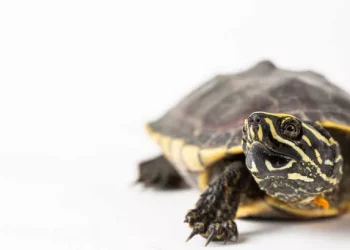The Aldabra tortoise, one of the largest tortoise species in the world, is not just a magnificent creature; it’s also a bit of an enigma when it comes to its age. Just like trying to figure out how many licks it takes to get to the center of a Tootsie Pop, determining the age of these gentle giants can be puzzling. While tortoises are known for their longevity, Aldabra tortoises are particularly famous for their extended lifespans, with some living over 100 years! So, how can you figure out just how old your Aldabra tortoise is? Let’s dive into this age-old question and uncover the secrets behind the shells.
Understanding Tortoise Lifespan
Before we tackle the ways to determine age, it’s essential to understand the lifespan of the Aldabra tortoise. These tortoises, native to the Aldabra Atoll in the Seychelles, can live for over a century under proper care. In fact, the oldest recorded Aldabra tortoise is thought to be around 255 years old! Imagine being able to remember every birthday you’ve ever had; that’s a lot of cake!
However, with such long lifespans, you might wonder why it’s crucial to know their age. Whether you’re a curious pet owner or a dedicated scientist, understanding an Aldabra tortoise’s age can provide insight into its health, behavior, and even care requirements. After all, a 25-year-old tortoise might have very different needs than a sprightly 100-year-old.
The Shell Game: Physical Characteristics
One of the most common methods for estimating the age of an Aldabra tortoise is by examining its physical characteristics, particularly its shell. The shell of a tortoise serves as its home and protection, but it also tells a story. Just like the rings of a tree, the shell can provide clues about the tortoise’s age.
Growth Rings
Aldabra tortoises have growth rings on their shells. These rings can be likened to the rings of a tree, where each ring represents a year of growth. However, unlike trees, tortoises don’t form a new ring every single year. Instead, the rings may appear more prominently in certain environmental conditions, such as the availability of food or during dry seasons. In optimal conditions, you might find a new ring forming each year. In harsher environments, they may skip a year or two, making it more challenging to accurately count their age.
To assess the growth rings, look closely at the scutes (the individual plates on the shell). Each scute can develop its own rings. Count the number of rings on several scutes to get an average. If you notice that the rings are closely spaced, it may indicate that the tortoise had a good year of growth. Wide spaces might suggest a year of scarcity.
Size Matters
Size is another indicator of age. Aldabra tortoises grow throughout their lives, and size can vary significantly among individuals. A juvenile Aldabra tortoise may weigh around 10-50 pounds, while adults can reach weights of 550 pounds or more. This massive size difference can give you clues about age. Generally, if your tortoise weighs over 250 pounds, it’s likely over 30 years old.
But size isn’t a perfect indicator. Factors such as diet, habitat, and health play significant roles in determining how quickly a tortoise grows. A well-cared-for tortoise may grow larger than one living in less-than-ideal conditions. So, while size can give you hints, it should not be the sole factor in determining age.
Shell Shape and Texture
In addition to growth rings and size, the shape and texture of the shell can also indicate age. Younger Aldabra tortoises often have smoother, more domed shells, while older tortoises tend to develop flatter, more textured shells. The texture can become rugged and rough as the tortoise ages, similar to the way our skin changes over the years.
Examine the shell carefully. If it appears more flattened and less shiny, your tortoise might be on the older side. This change in texture happens as the tortoise ages and undergoes wear and tear in its natural habitat.
Behavioral Clues: Personality Traits of Age
Aside from physical characteristics, the behavior of an Aldabra tortoise can also hint at its age. These gentle giants have unique personalities that evolve as they grow older.
Activity Level
Younger tortoises tend to be more active and curious. They explore their environment with zest, munching on plants, digging, and generally being little adventurers. As tortoises age, they often become less active and more sedentary. While a young tortoise may roam around its enclosure, an older tortoise might prefer lounging in the sun, conserving energy for essential activities like eating and basking.
If your tortoise spends most of its day lounging and seems uninterested in exploring, it could be a sign of maturity. However, keep in mind that every tortoise is unique; some older tortoises may still enjoy a good wander now and then.
Eating Habits
As tortoises age, their dietary needs and preferences may change. Younger tortoises require more protein and nutrients for growth, while older tortoises may gravitate toward a more fibrous, plant-based diet. If you notice that your tortoise has become pickier with its food or seems to prefer leafy greens over protein sources, it may be an indication of its advanced age.
The Role of Records and History
While the above methods can help estimate the age of an Aldabra tortoise, having a detailed history or records can provide the most accurate information.
Keep a Record
If you acquire a tortoise from a reputable breeder or rescue, they may provide you with information about its age. Many breeders document the hatching date and provide records that can help you determine the tortoise’s age with precision. This is particularly helpful for those who are unsure of how to estimate age using physical characteristics alone.
For existing tortoise owners, keeping a record of your tortoise’s growth and changes over time can be beneficial. Take notes on size, behavior, and any significant changes you observe. This information can help you track the progress of your tortoise and provide insights into its age.
See Also: What Are the Three Largest Tortoises in the World?
Consult an Expert
If you’re still puzzled about your tortoise’s age, consider consulting a veterinarian who specializes in reptiles. They can perform a thorough examination and provide insights into age estimation based on their expertise. A vet can also check for health issues that may affect growth and development, ensuring your tortoise remains happy and healthy.
Special Considerations: Environment and Care
The age of an Aldabra tortoise can also be influenced by environmental factors and how well it has been cared for. Proper habitat, diet, and medical care can greatly impact the tortoise’s health and longevity.
Habitat Conditions
Aldabra tortoises thrive in warm, humid environments. If your tortoise has been kept in suboptimal conditions, it may not grow as quickly or as robustly as one kept in an ideal environment. This is why understanding the care and conditions your tortoise has experienced is essential in estimating age accurately.
Health and Nutrition
Proper nutrition plays a vital role in a tortoise’s growth and longevity. A well-balanced diet rich in fiber, vitamins, and minerals is crucial. If your tortoise has had a history of poor nutrition, it may not exhibit the expected growth patterns associated with its age. Therefore, consider the tortoise’s past diet when assessing its age.
Age Beyond Numbers: The Wisdom of Tortoises
While knowing the age of your Aldabra tortoise can be intriguing, remember that every tortoise is unique, and its true value lies in the wisdom it has accumulated over the years. Aldabra tortoises are gentle giants with personalities as rich as their lifespans.
Personality Development
As tortoises age, their personalities can change significantly. Some may become more affectionate, while others might become more set in their ways. They might develop specific routines and preferences, which can be endearing.
Older tortoises may also exhibit a level of wisdom that can be amusing. For example, they may have a knack for escaping enclosures or finding the tastiest morsels in their habitat. Watching an older tortoise navigate its environment can provide a delightful glimpse into its seasoned experience.
The Legacy of Longevity
Finally, consider the impact of age on conservation efforts. Aldabra tortoises have faced threats from habitat loss and invasive species. Understanding their age and population dynamics is crucial for conservationists working to protect these remarkable creatures. The Aldabra tortoise serves as a reminder of the delicate balance of nature and the importance of preserving these ancient beings.
Conclusion
Determining the age of an Aldabra tortoise is no easy feat, but it’s certainly an adventure worth undertaking. From examining growth rings on their shells to observing changes in behavior, there are numerous clues to decipher. While size, shell texture, and personality traits can provide insights, nothing compares to the value of proper documentation and expert consultation.
In the end, age may be just a number, but it’s also a testament to the journey of your tortoise. Each ring on its shell and every moment spent in your care is a chapter in a long and storied life. So, whether your Aldabra tortoise is a sprightly juvenile or a wise centenarian, remember to cherish the moments and celebrate the uniqueness of your shelled companion. After all, they say age is just a state of mind; in the case of the Aldabra tortoise, it’s a state of shell!
Related Topics:



























